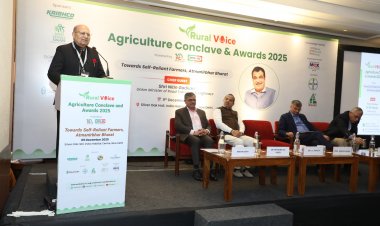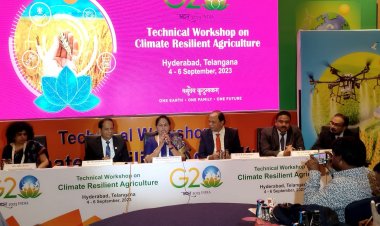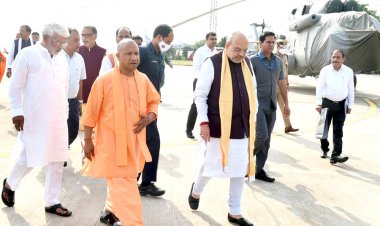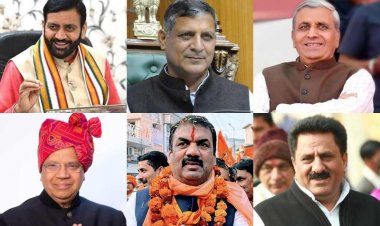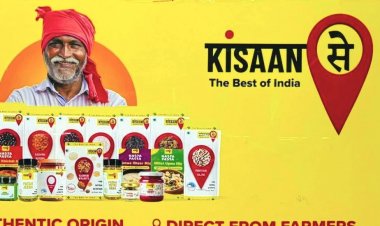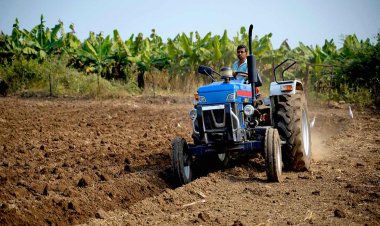Preparing for self-sufficiency in edible oils through NMEO-OP in the Northeast
With a view to reducing the dependence on imports in the case of edible oils, the central government is going to launch the National Edible Oil Mission—Oil Palm (NMEO-OP), under which preparations are being made to promote oil palm plantation. Plans are afoot under this mission for the plantation of oil palm in an area of more than three lakh hectares in the states of the Northeast by the year 2025-26. Besides oil palm plantation, installing the requisite capacity for its processing is also part of the mission.
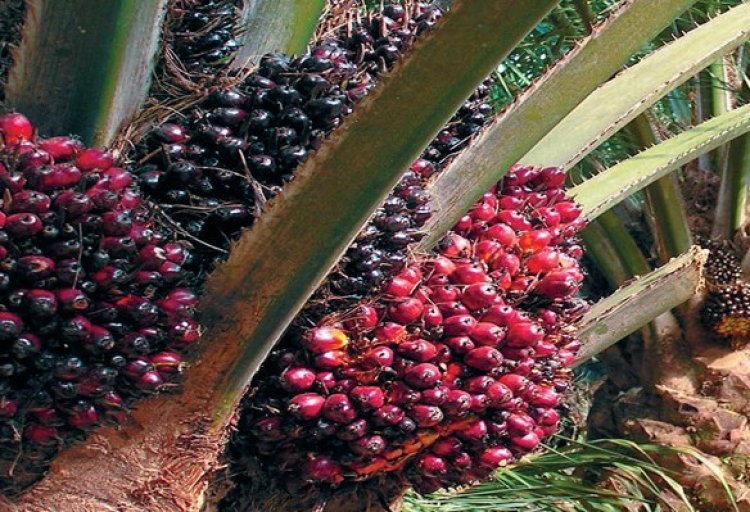
With a view to reducing the dependence on imports in the case of edible oils, the central government is going to launch the National Edible Oil Mission—Oil Palm (NMEO-OP), under which preparations are being made to promote oil palm plantation. Plans are afoot under this mission for the plantation of oil palm in an area of more than three lakh hectares in the states of the Northeast by the year 2025-26. Mizoram already has had oil palm plantation on about 29,000 hectares and the mission intends to extend this to other states. Besides oil palm plantation, installing the requisite capacity for its processing is also part of the mission. A presentation has already been given in this regard to Prime Minister Narendra Modi by the Ministry of Agriculture.
While more than 200 lakh tonnes of edible oils is consumed in the country, only 80 lakh tonnes is domestically produced; the remaining requirement is fulfilled by imports. With a steep rise in edible oil prices in the international market this year, the edible oil import bill may exceed Rs 1 lakh crore. Among the edible oil imports, palm oil has the largest share. The palm oil prices have reached a record 10-year high due to a drastic fall in production in Malaysia and Indonesia. This has led the edible oil prices to register a steep rise in the domestic market. It is to provide an alternative to this import that the government is planning to implement NMEO-OP in the Northeastern states of Assam, Mizoram, Manipur and Tripura.
Prof. Ramesh Chand, Member (Agriculture), Niti Aayog, told RuralVoice that the Ministry of Agriculture and the Indian Council of Agricultural Research (ICAR) were working on this project. He said that a presentation had been given to Narendra Modi, too, in this regard. The government has a target of 3.2 lakh hectares of oil palm plantation in the country by the year 2025-26. Prof. Chand says, “We have prepared its blueprint. Besides, oil palm processing companies are showing interest in investing in the Northeast.” He adds, “An equal area of oil palm produces many times more edible oil in comparison to common oilseeds. In a way, oil palm plantation in an area of 3 lakh hectares is equivalent to 30 lakh hectares of common oilseeds because oil palm is very rich in oil.”
According to the edible oil industry, the productivity of oil palm is up to 17-21 tonnes per hectare. The palm oil productivity in turn is up to five tonnes per hectare, which is several times more in comparison to conventional oilseeds. If this ambitious mission succeeds, we can become self-sufficient in edible oils.
The oil palm plantation in Mizoram has reached 29,000 hectares. There are enormous possibilities for it in the other states of the Northeast. Besides the Northeast, there are oil palm plantations in Telangana and Andhra Pradesh. Private sector companies too have their processing plants there. The Godrej Group and Ruchi Soya are already in the oil palm processing business.
The government sources say that for the NMEO-OP to succeed it is necessary to have the processing capacity installed close by the plantation area because fresh fruit bunches should be processed as soon as possible after harvesting. Besides, in order to promote oil palm, it is important to work out a formula in advance as to what price the farmers should get for their oil palm.
The production of oil palm begins in the fourth year of its plantation and the productivity gets better after another two years. Its cultivation requires more humidity and rainfall — conditions that make the states of the Northeast better suited for this purpose.
Two-thirds of the edible oil consumption in India is met through imports every year, costing about Rs 70,000-80,000 crore. Besides, these imports also determine the international prices due to their substantial size. Palm oil is the most imported edible oil to bridge the gap between demand and supply because it is the cheapest in the global market.
The maximum import of palm oil is from Indonesia and Malaysia because they are the largest palm oil producers in the world — the two countries contribute 72 per cent to global palm oil production. Indonesia and Malaysia contribute about 57 per cent and 27 per cent respectively. Last year, the two countries witnessed a drastic fall in production due to drought, and palm oil prices reached a 10-year high. As a result, imports became dearer for India and the edible oil prices reached up to double in the domestic market. Their retail prices crossed Rs 200 per litre. The value of imports will cross Rs 1 lakh crore in this oil season (November 2020-October 2021) at the increased prices.
This is why Prime Minister Narendra Modi said in a recent address that we should end import dependence in the case of edible oils. It is also true that it is not possible to bring about a massive increase in edible oil production through conventional oilseeds. Given this situation, if the NMEO-OP succeeds, it will make India self-sufficient in edible oils while the money being spent on edible oils will find its way to the pockets of the farmers within the country. Besides, non-essential increases in prices will be reined in.



 Join the RuralVoice whatsapp group
Join the RuralVoice whatsapp group

















